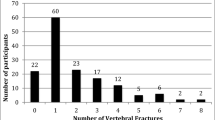Summary
Reaction time, choice reaction time and mental ability were measured in a sample of 123 young men. Previous musculoskeletal injuries were noted. Eight subjects who had experienced a bone fracture in the preceding 20 months had significantly longer choice reaction time and poorer mental ability test results than the non-injured. This preliminary result shows that long choice reaction time and poor performance on mental ability tests are associated with accidental musculoskeletal injuries.
Résumé
Sur un échantillon de 123 jeunes hommes on a évalué le temps de réaction, le temps de réaction avec choix et la capacité intellectuelle. On a noté l'existence d'antécédents traumatiques ostéoarticulaires. Huit sujets qui avaient eu une fracture au cours des 20 mois précédents présentaient un temps de réaction avec choix significativement plus long et une moins bonne capacité intellectuelle que les sujets non traumatisés. Ce travail préliminaire montre qu'il existe une relation entre les lésions accidentelles du squelette et la longueur du temps de réaction avec choix ainsi qu'avec des résultats médiocres aux tests mesurant la capacité intellectuelle.
Similar content being viewed by others
References
Bergenudd H, Nilsson B (1988) Back pain in middle age; occupational workload and psychologic factors; an epidemiologic survey. Spine 13: 58–60
Berson BL, Rolnik AM, Ramos CG, Thornton J (1981) An epidemiologic study of squash injuries. Am J Sports Med 9: 103–106
Bramwell ST, Masuda M, Wagner NN, Holmes TH (1975) Psychosocial factors in athletic injuries. J Human Stress 1: 6–20
Cady LD, Bischoff DP, O'Connell ER, Thomas PC, Allan JH (1979) Strength and fitness and subsequent back injuries in firefighters. J Occup Med 21: 269–272
Cattell RB, Cattell AKS (1960) Handbook for the individual or group culture fair intelligence test: scale 2. Institute for Personality and Ability Testing, champaign
Ciuollo JV, Jackson DW (1985) Pars interarticularis stress reaction, spondylolysis and spondylolisthesis in gymnasts. Clin Sports Med 4: 95–110
Coddington RD, Troxell JR (1980) The effect of emotional factors on football injury rates — a pilot study. J Human Stress 6: 3–5
Cryan PD, Alles WF (1983) The relationship between stress and college football injuries. J Sports Med 23: 52–58
Ekstrand J, Gillquist J (1983) Soccer injuries and their mechanisms: a prospective study. Med Sci Sports Excerc 15: 267–270
Ekstrand J, Gillquist J, Liljedahl SO (1983) Prevention of soccer injuries. Supervision by doctor and physiotherapist. Am J Sports Med 11: 116–120
Eriksson E (1976) Ski injuries in Sweden: a one year survey. Orthop Clin North Am 7: 3–9
Geary DC, Widaman KF (1987) Individual differences in cognitive arithmetic. J Exp Psychol [Gen] 116: 154–171
Hardy CJ, Riehl RE (1988) An examination of the life stress — injury relationship among noncontact sport participants. Behav Med 14: 113–118
Heim AW, Watts KP, Simmons V (1974) AH2/AH3 manual. NFER Pub Co, Windsor
Inoue M, Shino K, Hirose H, Horibe S, Ono K (1988) Subluxation of the patella. J Bone Joint Surg [Am] 70-A: 1331–1337
Jackson DW, Wiltse LL, Cirincione RJ (1976) Spondylolysis in the female gymnasts. Clin Orthop 117: 68–73
Jackson DW, Jarrett H, Bailey D, Kausek J, Swanson J, Powell JW (1978) Injury prediction in the young athlete: a preliminary report. Am J Sports Med 6: 6–14
Jensen AR, Munro E (1979) Reaction time, movement time and intelligence. Intelligence 3: 121–126
Jensen AR, Vernon PA (1986) Jensen's reaction-time studies: a reply to Longstreth. Intelligence 10: 153–179
Kerr G, Minden H (1988) Psychosocial factors related to the occurrence of athletic injuries. J Sport Exerc Psychol 10: 167–173
Kujala UM, Kvist M, Österman K, Friberg O, Aalto T (1986) Factors predisposing army conscripts to knee exertion injuries incurred in a physical training program. Clin Orthop 210: 203–212
Kujala UM, Österman K, Kormano M, Nelimarkka O, Hurme M, Taimela S (1989) Patellofemoral biomechanics and recurrent patellar dislocation. J Bone Joint Surg [Br] 71-B: 788–792
Lindley RH, Smith WR, Thomas TJ (1988) The relationship between speed of information processing as measured by timed paper- and pencil tests and psychometric intelligence. Intelligence 12: 17–25
Lloyd DCEF, Troup JDG (1983) Recurrent back pain and its prediction. J Soc Occup Med 33: 66–74
Lysens R, Stevernlynck A, van den Auweele Y, Lefevre J, Renson L, Cleassens A, Ostyn M (1984) The predictability of sports injuries. Sports Med 1: 6–10
Lysens RJ, Ostyn MS, van den Auweele Y, Lefevre J, Vuylsteke M, Renson L (1989) The accident-prone and overuse profiles of the young athlete. Am J Sports Med 17: 612–619
Murray JB (1982) Psychological aspects of low back pain: summary. Psychol Rep 50: 343–351
Passer MW, Seese MD (1983) Life stress and athletic injury: examination of positive versus negative events and three moderator variables. J Human Stress 9: 11–16
Raven JC (1965) Advanced progressive matrices: sets 1 and 2. Lewis Co, London
Robey JM, Blyth CS, Mueller FO (1971) Athletic injuries: application of epidemiologic methods. J Am Med Assn 217: 184–189
Taimela S, Kujala UM, Österman K (1990) Intrinsic risk factors and athletic injuries. Sports Med 9: 205–215
Torg JS, Vegso JJ, Sennelt B, Das M (1985) The national football head and neck injury registry. J Am Med Ass 254: 3439–3443
Troup JDG, Martin JW, Lloyd DCEF (1981) Back pain in industry; a prospective survey. Spine 6: 61–69
Ungerholm S, Gustafsson J (1985) Skiing safety in children: a prospective study of downhill skiing injuries and their relation to the skier and his equipment. Int J Sports Med 6: 353–358
Valliant PM (1981) Personality and injury in competitive runners. Percept Mot Skills 53: 251–253
Watson AWS (1984) Sports injuries during one academic year in 6799 Irish school children. Am J Sports Med 12: 65–71
Young LR, Oman CM, Crane H (1976) The etiology of ski injuries: a eight-year study of the skier and his equipment. Orthop Clin North Am 7: 13–29
Author information
Authors and Affiliations
Rights and permissions
About this article
Cite this article
Taimela, S., Kujala, U.M. & Osterman, K. The relation of low grade mental ability to fractures in young men. International Orthopaedics 15, 75–77 (1991). https://doi.org/10.1007/BF00179701
Issue Date:
DOI: https://doi.org/10.1007/BF00179701




